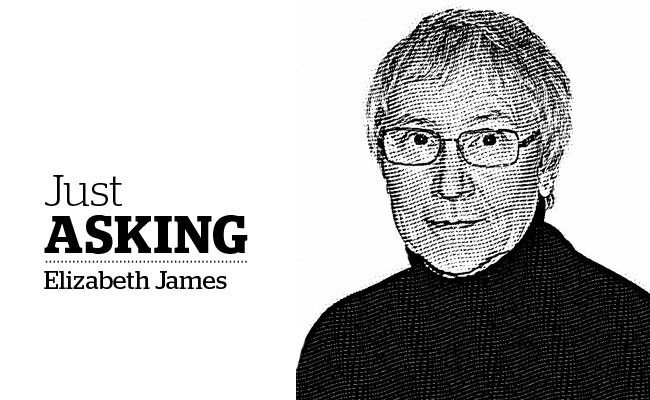“The collection and maintenance of cost information should be mandated by Department of Transport as a condition of funding … Lifecycle costs should be considered in addition to the capital costs, to ensure value for money exists over an extended period of time.”
— UK Tram, Oct. 15, 2012
After my last two columns had been submitted, I promised myself it would be a snowy day in July before I mentioned transportation again — and then I heard a rumour that could not be ignored.
If you have felt you were not being told everything you needed to know about our transit woes, you’re right; but thanks to a print-shy whistleblower it seems not all transit news is bad news for the North Shore. That’s because one of the many in-camera projects under consideration is an east-west-east light-rail line from Deep Cove to Horseshoe Bay.
Approximately 30 kilometres in length, it would be either a shared-track system using the existing railway line with switching mechanisms to control track usage, or a dedicated new light-rail installation.
From the per kilometre costs estimated by Delta’s light-rail guru Malcolm Johnston, the capital outlay for the first option, switches included, would be around $320 million for a modified shared-track system — complete with four cars and a minimal number of stops.
By comparison, according to numbers provided by transportation consultant David Cockle of the U.K.’s Leewood Projects, the capital costs of a 30-km, dedicated light-rail system built to international standards would be somewhere between $800 million and $900 million.
Again, the latter option includes the vehicles and “tram stops” which, while not yet set in stone, would offer 30-minute service to connect with other transit modes at Deep Cove, Phibbs Exchange (Capilano U and Lynn Valley), Lonsdale Quay/SeaBus/City Ferris Wheel, Capilano Mall, Taylor Way/Park Royal, Dundarave and Horseshoe Bay/Ferry Terminal.
Now that’s a project I could support.
In fact, long before Port Metro Vancouver announced its plans for the Low Level Road, I raised a similar idea with District of North Vancouver Mayor Richard Walton.
At the time, he expressed some interest but when nothing came of it, I assumed lack of more assertive lobbying on my part had allowed the idea to go by the wayside. Oh me, of little faith!
Now, in a rare show of unanimity if not outright friendliness, it seems all North Shore municipalities are in favour of taking the next step which would be to discuss the outline of the plan with the Port and First Nations’ stakeholders.
As this project goes ahead, it is absolutely essential for TransLink to forget in-camera meetings and involve residents in the discussions from Day One.
I doubt everyone will be as enthusiastic as one young Lynn Valley woman was when I ran the idea by her two weeks ago, “That would be awesome,” KE exclaimed.
“Right now, my friends who have to work late or want to go to a show in Vancouver have trouble making transit connections to get home safely,” she said.
“Heck, it takes forever to use transit if they’re just here with me watching a movie.”
Nonetheless, judging by some of the protests about the long-standing railway line in White Rock, I wouldn’t be surprised if Teacupville residents abutting the current line along Bellevue protest loudly when they learn a 30-minute commuter service is to be added.
Much of the information to be found in the cited UK Tram Briefing Paper – Costs of Light-rail Schemes is relevant to our region’s 16-year transportation history.
That is especially so when it comes to cost calculations and comparisons between different transit modalities, and/or transparency for the tax-paying public.
In particular, the paper may explain why the true cost of light-rail here is always inflated when compared with SkyTrain: if the costs of relocation of underground utilities are included as a light-rail project cost, we have to ask whether the costs of renewing Vancouver’s utilities along the Cambie Street corridor are being borne by all regional taxpayers as a hidden part of the $2.4 billion that was said to be the final cost of building the Canada Line.
If that’s the case, then we should ask for a status report on the utilities along the proposed Broadway tunnel route to see whether Mayor Gregor Robertson has found himself a neat way to get taxpayers in other municipalities to pay for renewal of Vancouver’s infrastructure.
If he has, taxpayers here should demand that whatever final route is chosen for the North Shore light-rail project, the region pays for renovation of our utilities, too.
• • •
One last point — with apologies to Lynn Valley’s eager KE — anonymous rumours are just that: rumours. So before anyone lights their hair on fire with a deluge of emails to local mayors, whether for or against the light-rail project please take a moment to realize that, while there is much transit substance included in this column, today’s date, when all is said and done, is April 1, 2015.
Elizabeth James can be reached via email at [email protected].
What are your thoughts? Send us a letter via email by clicking here or post a comment below.



